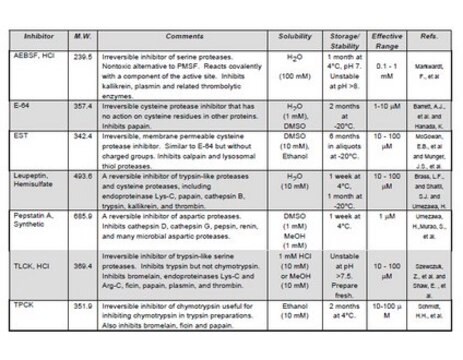539137
Protease Inhibitor Cocktail V
EDTA-Free, lyophilized, A cocktail of four protease inhibitors for the inhibition of serine, cysteine, but not metalloproteases.
Sinónimos:
EDTA free Protease inhibitor
About This Item
Productos recomendados
Nombre del producto
Protease Inhibitor Cocktail Set V, EDTA-Free, A cocktail of four protease inhibitors for the inhibition of serine, cysteine, but not metalloproteases.
Quality Level
form
lyophilized
manufacturer/tradename
Calbiochem®
storage condition
OK to freeze
desiccated (hygroscopic)
solubility
water: soluble
shipped in
wet ice
storage temp.
−20°C
General description
Specificity
Biochem/physiol Actions
Serine and cysteine proteases, but not metalloproteases
Warning
Reconstitution
Legal Information
signalword
Danger
hcodes
Hazard Classifications
Eye Dam. 1 - Skin Corr. 1A
Storage Class
8A - Combustible corrosive hazardous materials
wgk_germany
WGK 3
Certificados de análisis (COA)
Busque Certificados de análisis (COA) introduciendo el número de lote del producto. Los números de lote se encuentran en la etiqueta del producto después de las palabras «Lot» o «Batch»
¿Ya tiene este producto?
Encuentre la documentación para los productos que ha comprado recientemente en la Biblioteca de documentos.
Los clientes también vieron
Nuestro equipo de científicos tiene experiencia en todas las áreas de investigación: Ciencias de la vida, Ciencia de los materiales, Síntesis química, Cromatografía, Analítica y muchas otras.
Póngase en contacto con el Servicio técnico














